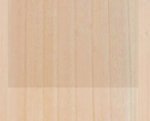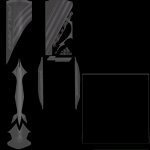That is not always the case. I would say that there would be three variations:
- the wood (includes grain variations)
- the translucent bit of the sticker (i.e. the blank bit but is still made of sticker)
- the actual coloured bit of the sticker.
I've just been looking at my bat, and there is definitely a difference between the specular highlights where the sticker has colour and where it does not. I think this is because the colours are printed onto the stickers, and the stickers are actually quite matt, but the printing ink is quite shiny.
I certainly don't believe there is as much difference in the specularity as CM have put in that example you show.
There may also be some 'extra-specular' bits on certain bats to consider. For example, Slazenger used to have a bat with chrome-like stickers, as did GM I think.
EDIT: just realised that I'm arguing on the same side here due to:
Burma's Finest said:
There should only be two variations of tone in the resulting specular map. One for the translucent portions and one for the painted areas.
But the bit about the chrome/whatever still stands!
Re-Edit:
Also, consider that the stickers may be more separated than just one block for front and back. Look at this:
You can see each bit has its own sticker, but also the translucent 5mm or so border around each sticker. Perhaps just use a stroke layer effect for this, with a very low opacity.









 Can you give bat preview from back if possible.
Can you give bat preview from back if possible.